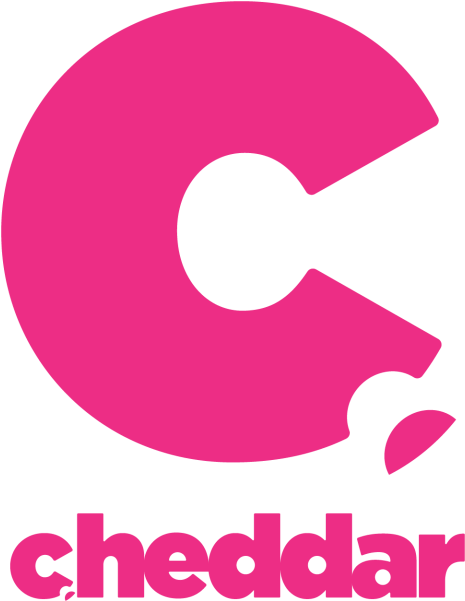
Affect fights drug addiction with video game design theory in a smartphone app – Cheddar Innovates
Affect’s CEO, Kristin Muhlner chats with ‘Cheddar Innovates’ about how Affect is leveraging the approaches that make games and smartphone apps so engaging to treat methamphetamine and cocaine addictions in a revolutionary way.
Transcript:

Megan Pratz: Welcome back to Cheddar Innovates, brought to you by CuriosityStream. Our next guest is on a mission to change the way the world treats stimulant addiction. Affect is an app that uses video game theory to fight drug addiction and is backed by leaders in both industries, including former President Obama’s deputy director of National Drug Control and the studio head of LucasArts that’s the creator of the Star Wars video game franchise. So joining us now is Kristin Muhlner. She is the CEO of Affect.
Megan Pratz: Now, Kristin, let’s just start right off the bat. How does this app work to fight and treat drug addiction with video game theory?
Kristin Muhlner: Yes, thank you. In fact, the app is built upon a whole set of research that’s been conducted for decades in the treatment of stimulant use disorders. Specifically, what we implement is what is known as contingency management. But what that really is, are just incentives for healthy behaviors.
Kristin Muhlner: And so as a patient continues through a recovery program, they’re incentivized through the app for adherence to the program, whether that’s participation in a meeting or, more importantly, delivery of a clean drug test.
Megan Pratz: So you started a field study back in January with the app. What have been some of the results that you have seen so far?
Kristin Muhlner: It’s really been extraordinary. We’ve been delighted with the results. The field study itself has been conducted in California. We’ve treated well over 50 patients through an eight week episode of care. And within that episode of care, the patients had access to the therapeutic app, which gives them daily tasks that they’re asked to perform in support of their recovery journey.
Kristin Muhlner: It also helps guide them into our broader care system, which includes group therapy, one on one addiction counseling, drug screening, as well as coaching, all of which happen over telemedicine. The app itself then, of course, is the vehicle through which we’re providing those incentives, whether it’s a fixed incentive for participation in a meeting or a variable incentive, which are sort of accelerated payments based on streaks of behavior like streaks of abstinence and clean drug tests.
Kristin Muhlner: The results have really blown us away. Over that eight week episode of care, the patients have demonstrated a retention rate through the entire treatment program of well over 50 percent, which is 2-3 times what you would typically see with an outpatient treatment program that is not specific to this type of population.
Megan Pratz: We were just seeing some images of the app on our screen. It looks incredibly user friendly and easy to use. And I didn’t mean to interrupt you. I just really like to see that it’s very streamlined, this gamification of treatment, a very unique use. So please continue what you were saying.
Kristin Muhlner: No, no. The only thing I was going to add with respect to outcomes that we’ve seen is that in addition to retention and treatment, we’ve also seen that patients are able to achieve sustained abstinence. So roughly 20 percent of our patients have sustained abstinence coming out of treatment and roughly another 65 percent have managed to significantly reduce their drug use over the course of treatment. So really great outcomes that we’re- we’re delighted with from the program.
Kristin Muhlner: And thank you again for acknowledging the usability of the app. Obviously, engagement and using some of these, you know, these gaming concepts to drive people back to the app and to the program is all what we’re here to do. We want to try to keep people in treatment and keep them excited about it.
Megan Pratz: Yeah. Co- competing is always fun for people. So I want you to put into perspective how big of a problem stimulant use disorder is in our country.
Kristin Muhlner: So a lot of people don’t realize that this is the second drug epidemic that we’re fighting as a country. A lot of the- the current policy, a lot of the attention goes to the opioid epidemic, but, the methamphetamine epidemic is growing and now is the single largest overdose killer, from illicit substances west of Mississippi. It’s a massive problem. It’s estimated there are about three million folks in America who are suffering from effused disorder and another five million are also suffering from cocaine use disorder.
Kristin Muhlner: It’s also really sobering to look at the research that the CDC released earlier this year which shows roughly two percent of high school kids having tried methamphetamine in the last year. It’s a huge issue. It’s growing and it’s a problem for which there is no national standard of care.
Megan Pratz: I lived in a crossroad state during high school in Utah where two highways crossed and we had a very large meth problem because of that. So that raises another question which is what are some of the biggest barriers that individuals are facing when they’re trying to seek treatment today?
Kristin Muhlner: Well we just talked about one of them which is a lack of high quality programs that are specific to this population and this particular substance use disorder. When individuals do seek out treatment, they often are directed to outpatient treatment clinics that have sort of a general purpose program largely based on cognitive behavioral therapy. That’s not proven to be terribly effective with this population. The other major issue that we have here is that much of this population exists in rural areas where access to care to traditional brick and mortar facilities just is not available to them, and so by providing a digital solution where they can engage, where they can get treatment, we can really lower the barrier that results from folks who just can’t get to care.
Kristin Muhlner: Finally there’s just a shame component to this that anyone who is dealing with a substance use disorder has to face and through a digital program, through digital participation in group meetings, through connection with other folks who are struggling with these same issues, we can really drive more people to treatment and sort of lower some of their inhibitions that may exist as a result of- of wanting to seek out treatment.
Megan Pratz: So Kristin I have about 30 seconds left so I’m going to ask you to boil this down as- as small as you can, even though it’s a very big question. What are your plans for growth and reaching more of the people who are in need of treatment especially in these rural far to reach areas?
Kristin Muhlner: So we’re working with the largest health insurance payers and managed care organizations in the country to engage these patients. For the health insurance system, these are very expensive patients to treat. They are sick. They have, uh, lots of co-occurring disorders. They end up being hospitalized more than the average population. So there’s a lot of benefit to getting them healthier, and so we’re working through these channels to help reach as many people as we can.
Megan Pratz: Kristin Muhlner, thank you so much for joining us. Kristin is the CEO of AFFECT.


